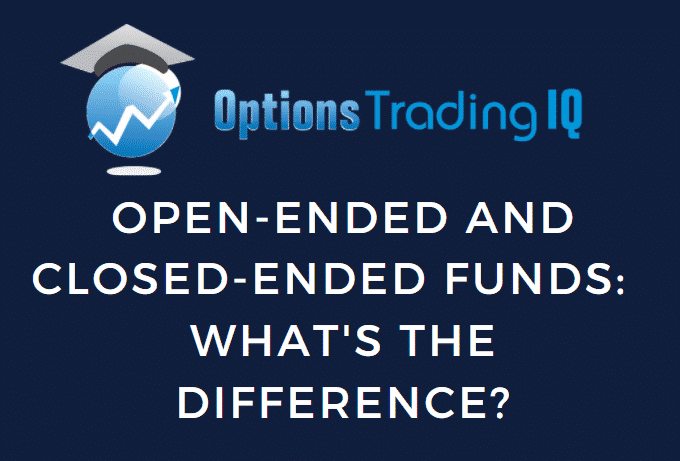

We are going to take a look at the differences between open ended and closed ended funds.
You will want to know more about some important differences before you consider investing in either of these options.
Both types of funds have important purposes because they are specifically designed for different types of investors.
Contents
- Open-Ended Funds vs Closed-Ended Funds
- Open-Ended Funds And 401(k) Retirement Plans
- Closed-Ended Funds And Volatility
- Conclusion | Open-Ended Funds vs Closed-Ended Funds
Before we dive straight into the comparison between these two types of funds, you must understand the fundamentals of each kind of fund.
We’ll start by describing an open-ended fund.
These types of funds are certainly much more common than closed-ended funds.
You could imagine an open-ended fund to be a diversified collection of shares that has no direct limit.
Exchange-traded funds, also known as ETFs, are an extremely common form of an open-ended fund.
On the other side of the spectrum, you have something known as a closed-ended fund.
This type of fund is based on a portfolio designed to raise money by creating an initial public offering.
The predetermined amount of money is raised by selling an established number of shares to investors on the stock market on a specific date.
Closed-ended funds have significant price fluctuations based on the supply and demand of investors.
These funds are a little bit less common than open-ended funds and have their own set of pros and cons.
Open-Ended Funds vs Closed-Ended Funds
It’s understandable why some experienced investors may struggle to understand how open-ended and closed-ended funds work.
We’ll start by discussing some of the relevant things to know about open-ended funds.
Open-ended funds issue shares based on the demand from investors.
These funds are not restricted in terms of growth potential, and they can be based on different investment strategies.
There’s usually a professional portfolio manager in charge of managing an open-ended fund.
It’s not unusual for open-ended funds to try and save some cash in their portfolio, especially if many shareholders redeem their shares at the end of a trading day.
Investors can expect to pay significant fees when investing in an open-ended fund.
You’ll have the opportunity to take advantage of professionally managed portfolios that are diverse and liquid.
In addition, many open-ended funds are specifically designed to outperform the stock market’s growth averages annually.
Are you still uncertain if investing in an open-ended mutual fund is right for you?
It’s important to keep in mind that these types of open-ended funds are ideal for investors that want liquid investment opportunities.
The biggest difference between an open-ended fund and a closed-ended fund is that the closed-ended funds are actively traded on the stock market by individual investors.
Like a traditional stock, a closed-ended fund will raise money through an initial public offering and sell shares to investors.
Price fluctuations occur in closed-ended funds based on supply and demand.
Open-Ended Funds And 401(k) Retirement Plans
One of the reasons why open-ended funds are so popular is that many employees have an eligible 401(k) retirement plan offered by their company.
These types of retirement plans generally provide excellent access to open-ended funds.
In open-ended funds, prices are calculated at the end of the trading day.
Shares are continuously offered, unlike some closed-ended funds with a limited supply that can be distributed to interested investors.

Closed-Ended Funds And Volatility
It’s not uncommon for closed-ended funds to have increased volatility compared to other types of mutual funds.
Price fluctuations may be significant in these types of funds and provide greater risks to investors.
We previously mentioned the process of an initial public offering taking place that allows investors to acquire a limited supply of shares that can actively be traded.
This process can play a role in the increased volatility as well.
Conclusion | Open-Ended Funds vs Closed-Ended Funds
If you’re a novice investor, you might be thinking that all of these different types of funds are making your head spin around in circles.
It’s understandable because all of the funds have different purposes, risk levels, and reasons for existing in the first place.
They’re all designed to provide investors with opportunities for liquid investment strategies.
If you understand the basic purposes and fundamentals for open-ended and closed-ended funds, then you’ll be able to realize why you might want to take a chance investing in either type of fund.
No mutual fund will ever be perfect, and there will be positives and negatives for investing in each type of fund.
As long as you can establish your near-term objectives as an investor, you should be able to make a well-informed decision regarding which type of fund would be best for you.
Trade safe!
Disclaimer: The information above is for educational purposes only and should not be treated as investment advice. The strategy presented would not be suitable for investors who are not familiar with exchange traded options. Any readers interested in this strategy should do their own research and seek advice from a licensed financial adviser.










